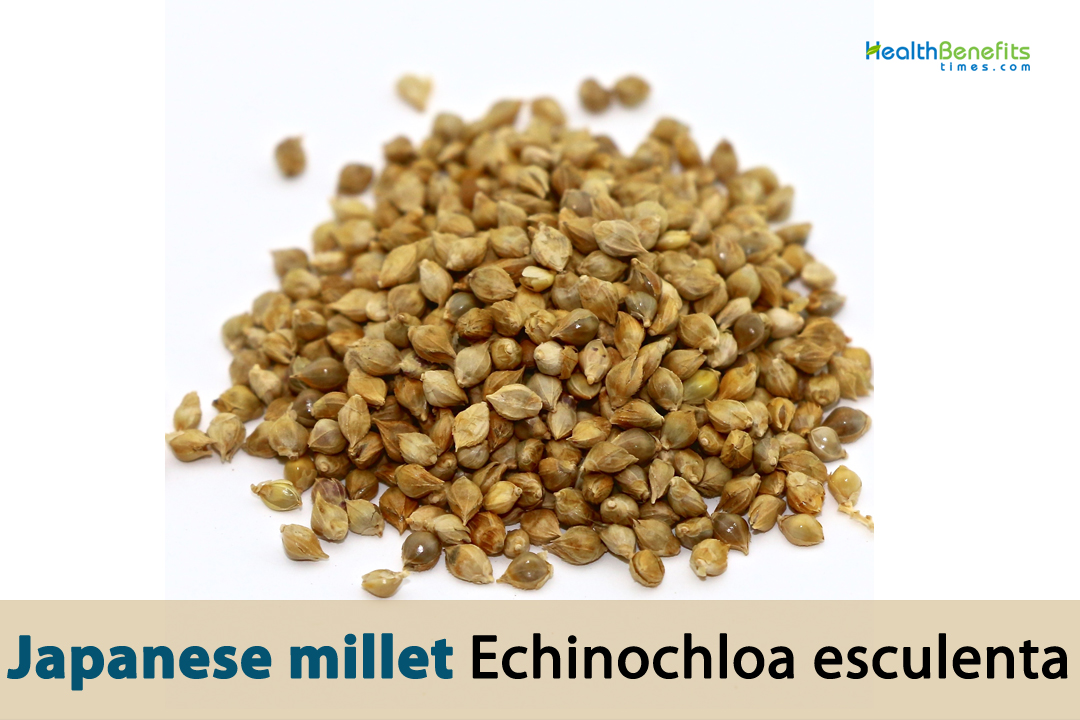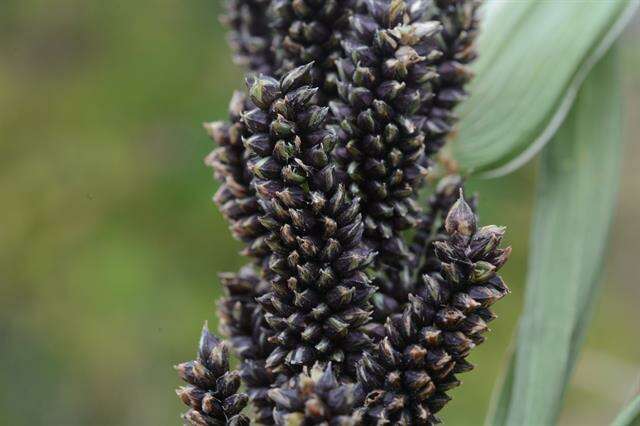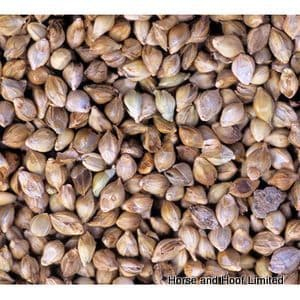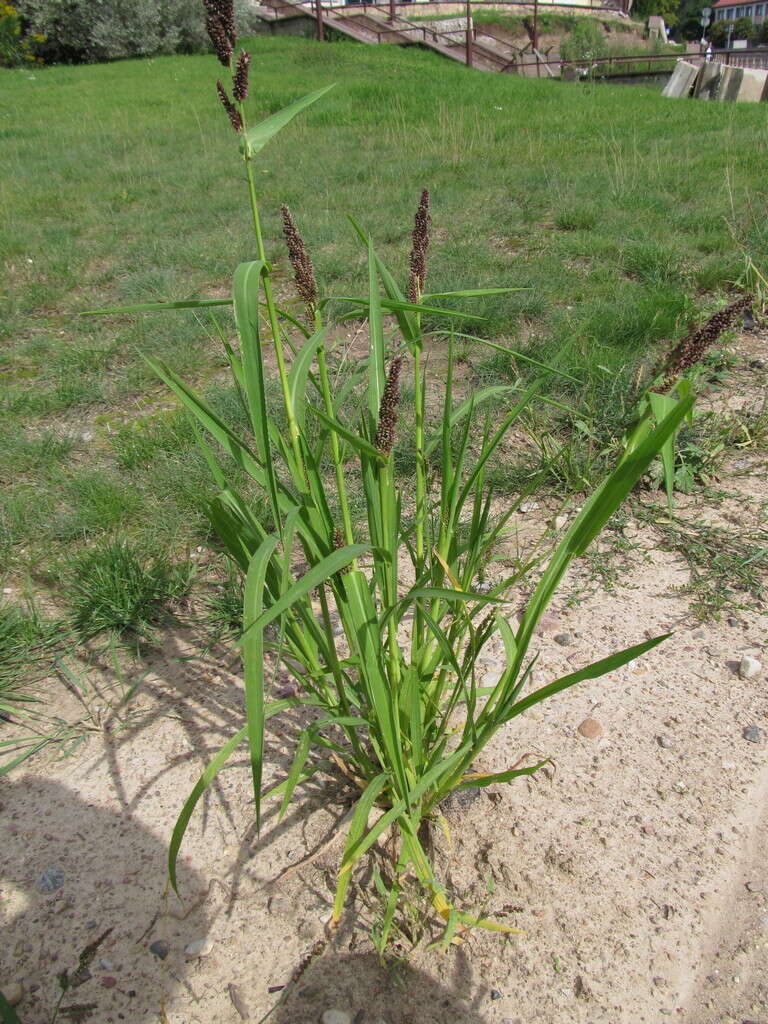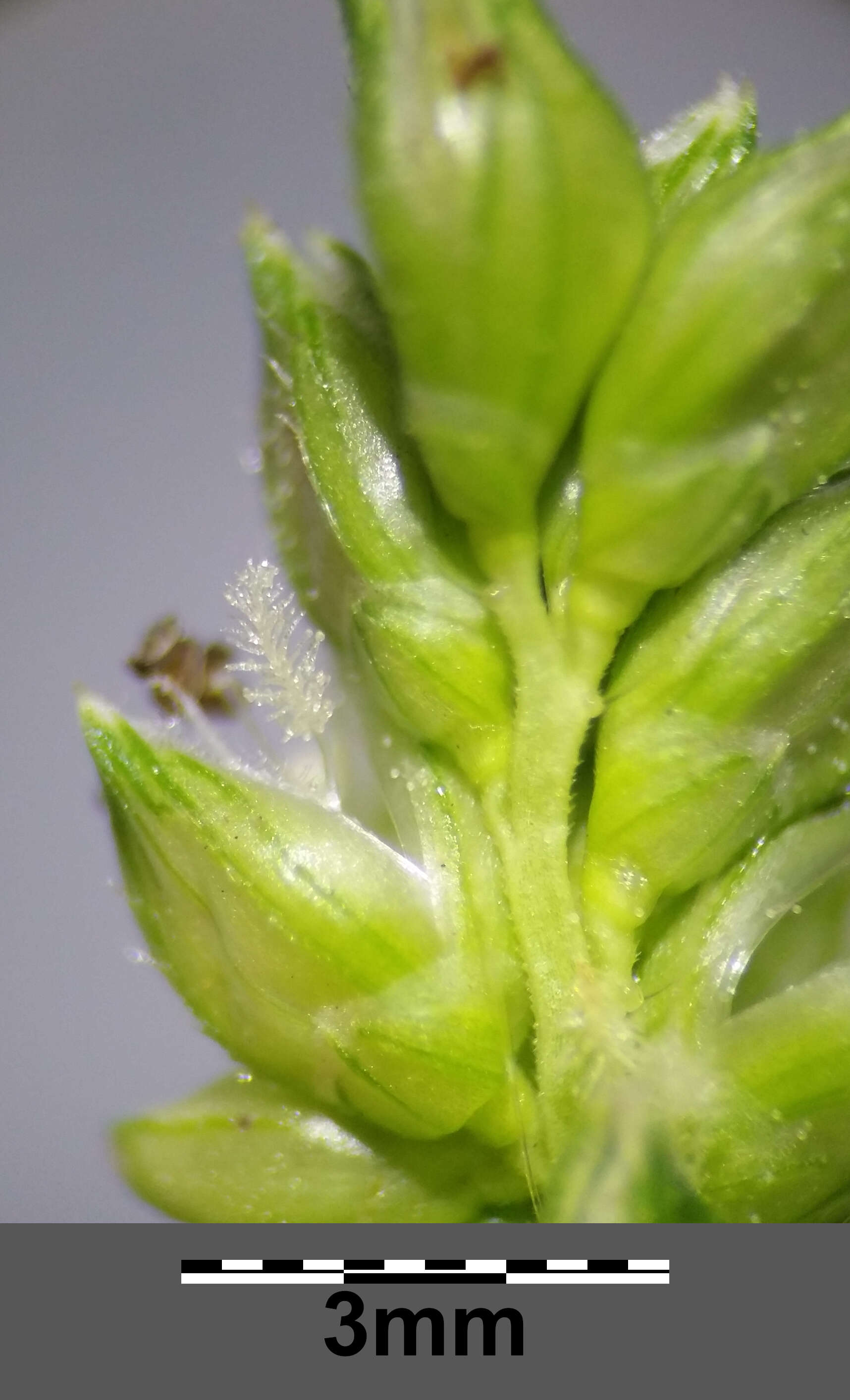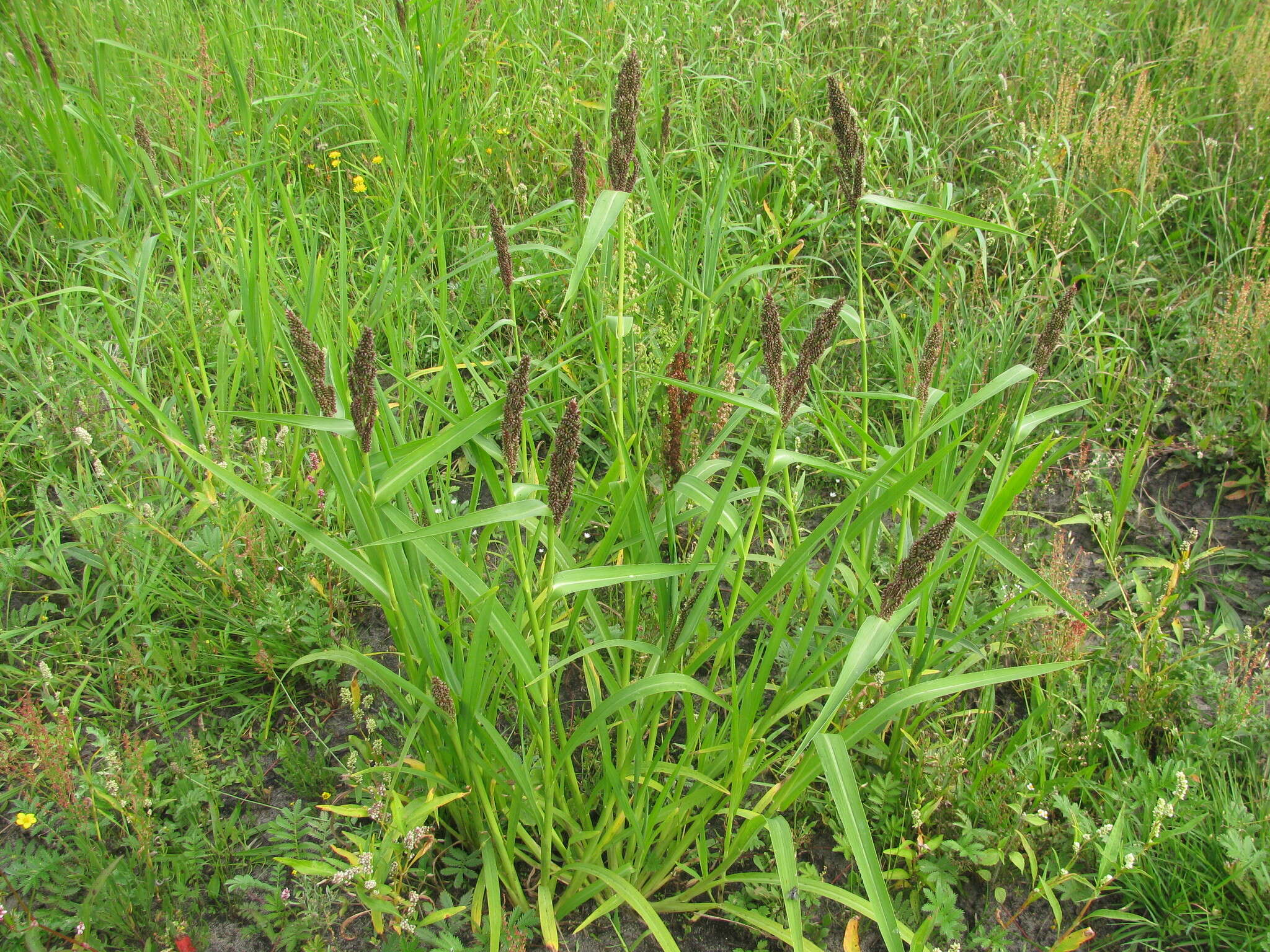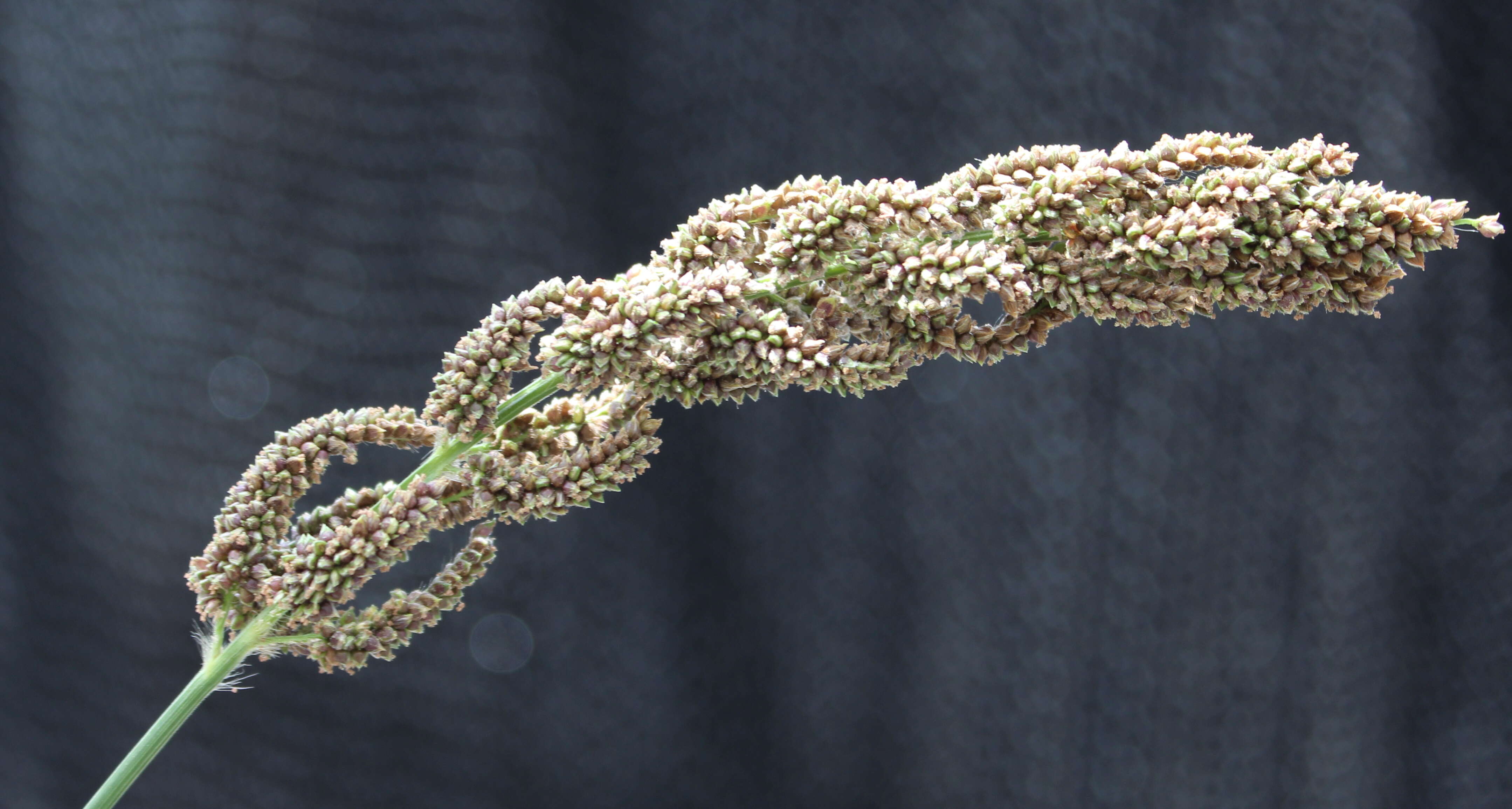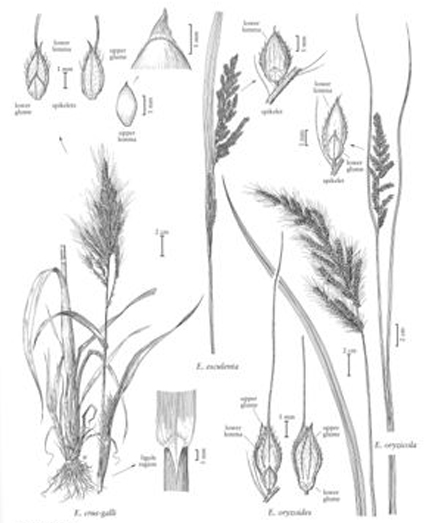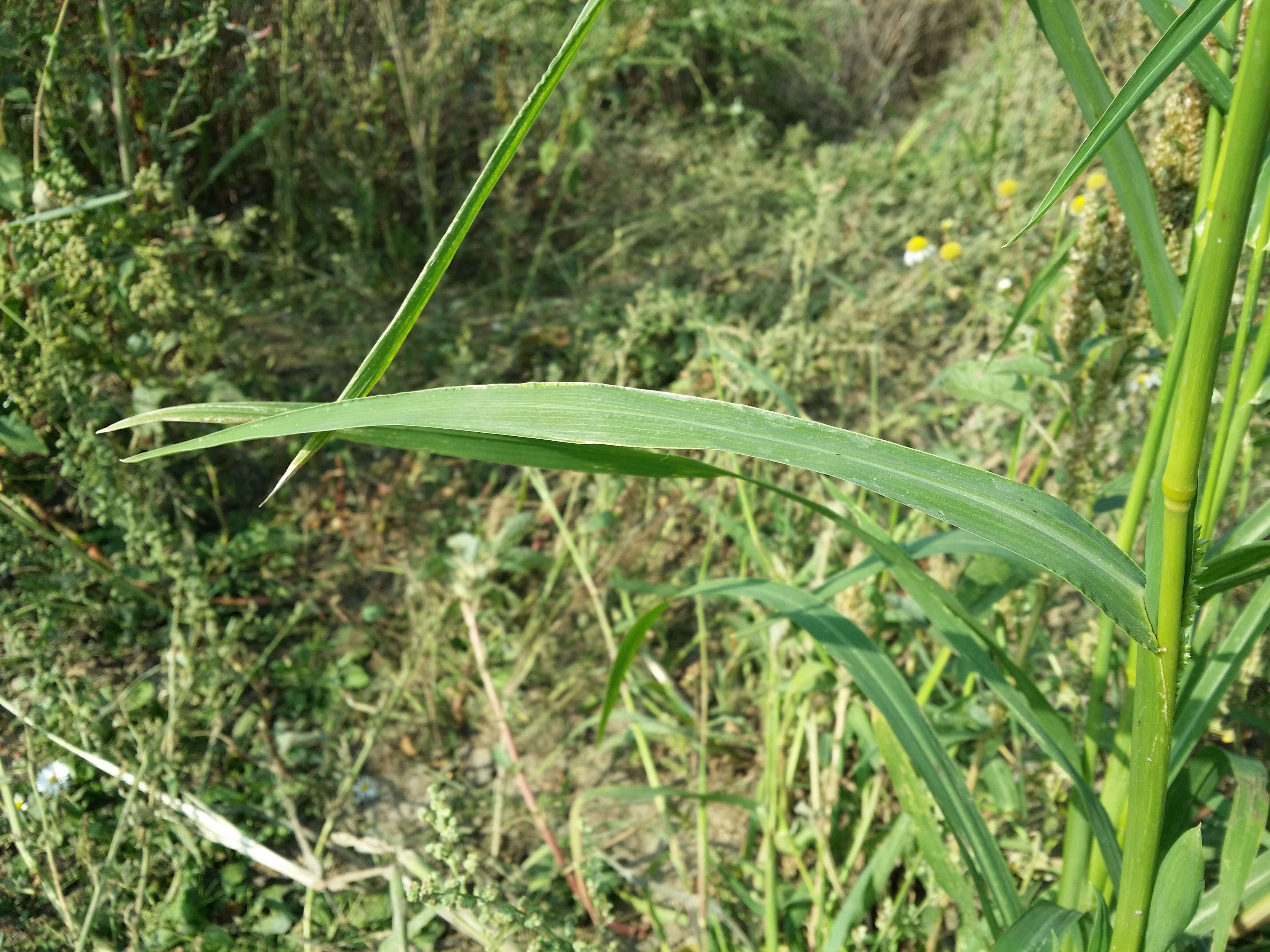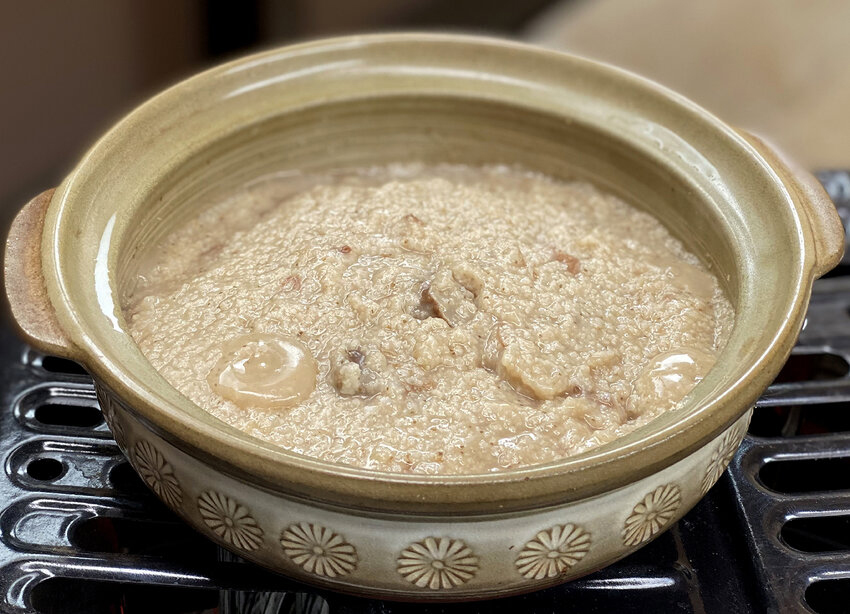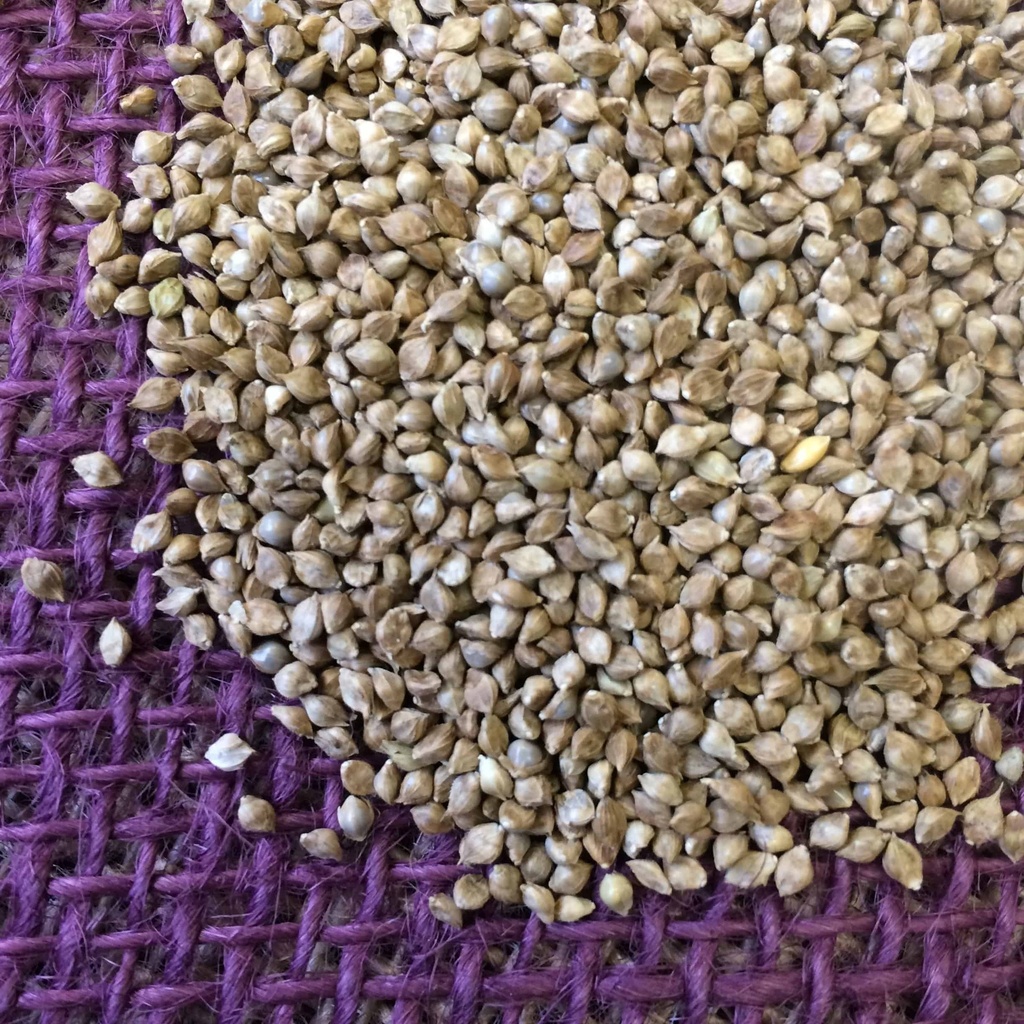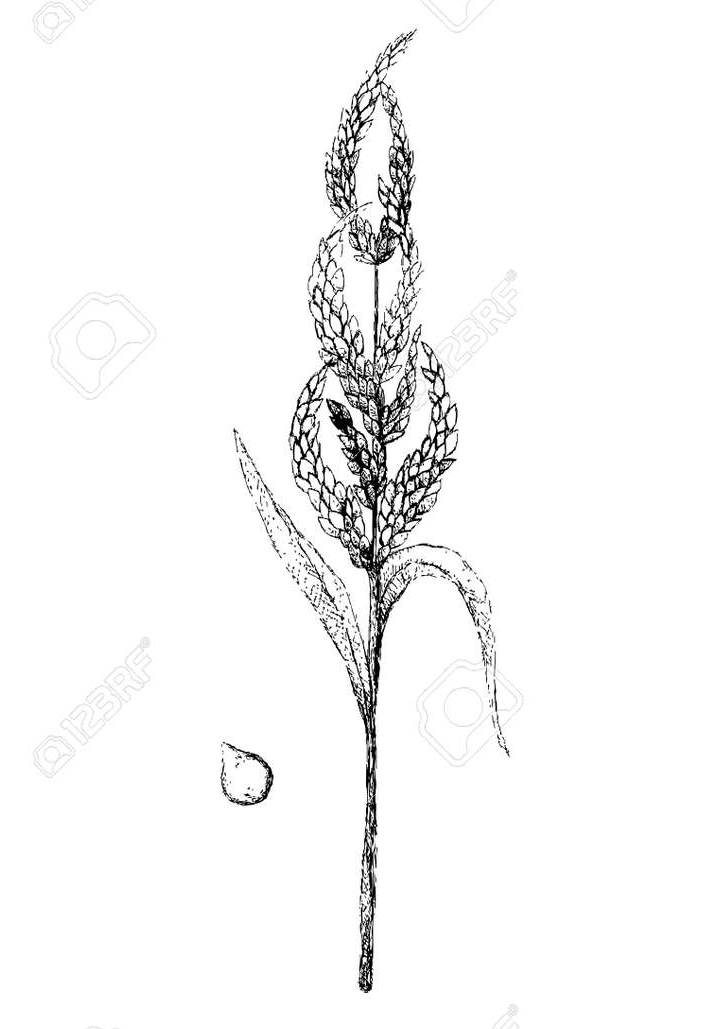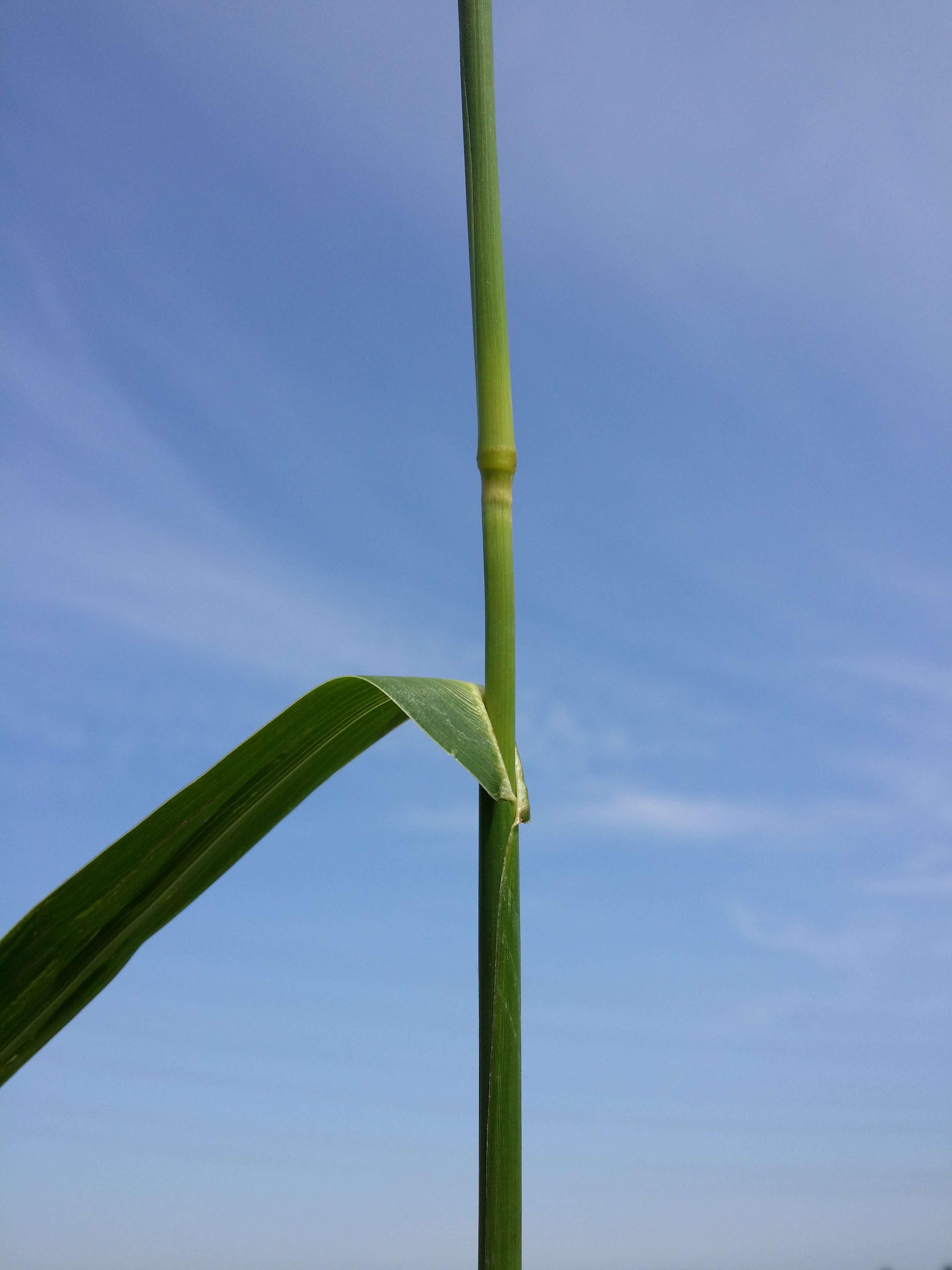| Japanese millet Quick Facts | |
|---|---|
| Name: | Japanese millet |
| Scientific Name: | Echinochloa esculenta |
| Origin | Southeast Asia, including regions of India, China, Japan and Korea |
| Colors | Brown or yellowish (Seed) |
| Shapes | Small, hard, and encapsulated within the lemma and palea (Seed) |
| Taste | Mild and slightly nutty with a hint of sweetness |
| Major nutrients | • Carbohydrate • Dietary Fiber • Protein • Vitamins • Minerals • Antioxidants • Fats • Amino Acids • Phytosterols • B vitamins |
| Health benefits | Weight Management, Heart Health, control Blood Sugar, reduced Risk of Chronic Diseases, Enhanced Immune Function, Healthy Skin and Hair, Menstrual Health, Better Mental Health, Bone Strength, Supports Healthy Blood, Balanced Blood Cholesterol, Reduced Risk of Osteoporosis |
| Name | Japanese millet |
|---|---|
| Scientific Name | Echinochloa esculenta |
| Native | Echinochloa esculenta |
| Common Names | Japanese barnyard millet, Japanese millet, Billion-dollar grass, Sanwa millet , Chinese millet, Indian barnyard millet, Brown top millet, Jap millet, Sanwa-kari, Japbristle panicum, Wild proso millet, Japanese panic grass, Shama millet, Duck rice, White millet, Swamp rice, Chinese barnyard millet, Billion-dollar forage grass, Shama grass, Wild millet, Billion-dollar grass millet, Indian wild millet, Billion-dollar grain, Japanese wild millet, White-seeded barnyard grass, Swamp grass |
| Name in Other Languages | Arabic: Dukhn yabani (دخن ياباني) Assamese: Japanese millet Bengali: Japani Bajra (জাপানি বাজরা), Syaba (স্যাবা) Bhojpuri: Japanese millet Bodo: Japanese millet Bhili: Japanese millet Bulgarian: Yaponsko proso (Японско просо) Chhattisgarhi: Japanese millet Chinese: Rìběn bài (日本稗), zi sui bai (紫穗稗) Croatian: Japanski prosoCzech: Japonská proso Czech: Ježatka japonská Danish: Japansk hirse, Korn-hanespore, Japanhirse Dogri: Japanese millet Dutch: Japans gierst English: Japanese millet, Japanese Barnyard Millet, White Millet, Japanese Water Grass, shirohie millet Filipino: Hapon millet Finnish: Japaninkananhirssi French: Millet japonais, Millet du Japon Garhwali: Japanese millet Garo: Japanese millet German: Japanisches Hirse, Japan-Hühnerhirse, Speise-Hühnerhirse, Japanische Hirse, Japanische Hühnerhirse, eßbare Hühnerhirse, japanische Hirsche Gondi: Japanese millet Greek: Laponiko katarrakti (Ιαπωνικό καταρράκτη), Iaponikó krithári (Ιαπωνικό κριθάρι) Gujarati: Japanese bajri (જાપાનીઝ બાજરી), Bari (બારી) Haryanvi: Japanese millet Hebrew: Shevavim yapaniyim (שבבים יפניים) Hindi: Jaapani Bajra (जापानी बाजरा), Bari (बारी), Jhangora, madhira Hungarian: Japán árpa, japán köles Italian: Miglio giapponese, Giavone miglio giapponese Japanese: Hie (ヒエ) Kachari: Japanese millet Kannada: Japanese millet (ಜಾಪನೀಸ್ ಮಿಲ್ಲೆಟ್), Bari (ಬಾರಿ), Japani Raagi (ಜಾಪನೀಸ್ ರಾಗಿ) Karbi: Japanese millet Kashmiri: Japanese millet Khasi: Japanese millet Kokborok: Japanese millet Konkani: Japanese millet Korean: Ilbon bye (일본벼), Pi (피) Kumaoni: Japanese millet Lepcha: Japanese millet Magahi: Japanese millet Maithili: Japanese millet Malay/Indonesian: Jawi millet Malayalam: Japanese pani (ജപ്പാനീസ് പനി), Bari (ബാരി), Japani Raagi (ജപ്പാനീസ് റാഗി) Manipuri: Japanese millet Marathi: Japanese kanda (जपानी कांदा), Bari (बारी), Japani Bajri (जपानी बजरी) Mizo: Japanese millet Nepali: Japani Bajra (जापानी बज्रा), Japanese millet Odia: Japani bajara (ଜାପାନି ବାଜର), Japanese millet Persian: Zart mile’i zhapni (ذرت میلهای ژاپنی) Polish: Jęczmień japoński, chwastnica jadalna Portuguese: Milheto japonês, capim-arroz, milho-do-Japão Punjabi: Japani Bajra (ਜਪਾਨੀ ਬਾਜਰਾ), Bari (ਬਰੀ) Rajsthani: Japanese millet Romanian: Hir de Japonia Russian: Yaponskaya proso (Японская просо), Ežovnik kul’tiviruemyj (Ежовник культивируемый), Japonskoe proso (Японское просо) Santali: Japanese millet Sanskrit: Japanese millet Serbian: Japansko proso (Јапанско просо) Sindhi: Japanese millet Sinhala: Japan bunu (ජපන් බුමු) Slovak: Japonská prosa Slovenian: Japonska proso Spanish: Mijo japonés Swahili: Mtama wa Kijapani Swedish: Japansk hönshirs Tamil: Japanese pani (ஜப்பானீஸ் பனி), Paruthi (பருத்தி), Japaniya Kuthiraivali (ஜப்பானிய குதிரைவாலி) Telugu: Japanese panijeelu (జాపనీస్ పనిజీలు), Bari (బారి), Japani Raghi (జపానీస్ రాగి) Thai: Khao fang yipun (ข้าวฟ่างญี่ปุ่น), Khao Hang Kung (ข้าวฮางกุ้ง) Tulu: Japanese millet Turkish: Japon darısı Ukrainian: Yaponska proso (Японська просо) Urdu: Japani Bajra (جاپانی باجرا) Vietnamese: Lúa mạch Nhật Bản, Lúa tay Welsh: Cibogwellt Japan |
| Plant Growth Habit | Erect, light green, fast-growing, annual, warm-season grass |
| Growing Climates | Erect, light green, fast-growing, annual, warm-season grass |
| Soil | It does not grow well on sandy soils |
| Plant Size | 2–4 ft (60–120 cm) tall |
| Root | Fibrous root system that can reach to 1½ ft (46 cm) deep |
| Stem | Culm is usually slender, upright, and hollow, although it may be slightly pithy in the center |
| Bark | Doesn’t have a typical bark structure |
| Leaf | Long, flattened, green, lance-shaped blades. Edges may have a smooth (entire) or slightly toothed (serrated) margin |
| Flowering season | Between May and July |
| Flower | Within each spikelet, there are one or more fertile florets. These are the true flowers that contain reproductive structures. The stamens are the male reproductive organs of the flower, and they produce pollen. The pistil is the female reproductive organ of the flower and consists of the stigma, style, and ovary |
| Fruit Shape & Size | Caryopsis is the mature fruit of Japanese millet. It is a one-seeded fruit that develops from the fertilized ovule within the pistil |
| Fruit Color | Brown or yellowish |
| Seeds | Small, hard, and encapsulated within the lemma and palea, making it protected and well-suited for dispersal |
| Varieties |
|
| Flavor/Aroma | Mildly sweet and nutty fragrance with subtle earthy undertones |
| Taste | Mild and slightly nutty with a hint of sweetness |
| Plant Parts Used | Seed, leaves, stem |
| Propagation | By seed, stem cuttings, Transplanting |
| Lifespan | Approximately 60 to 90 days |
| Season | Between May and August |
| Major Nutrition |
|
| Available Forms |
|
| Health benefits |
|
Plant Description
Japanese millet is an annual, warm-season grass that grows straight up and is light green. It grows quickly and usually gets between 2 and 4 feet (60 to 120 centimetres) tall when it’s fully grown. In some cases, though, they may get a little taller if the circumstances are right. Every plant has a width that is less than its height. Cover crop that keeps weeds down. It can grow up to 4 feet in 45 days. The plant grows in barren, stony land, on the sides of roads, in wet marshes, along rivers and ponds, and in rice fields. The plant does best in soils that drain well and hold water well. Different types of dirt, like sandy, loamy, and clayey soils, can support its growth. It can grow in a lot of different pH levels of earth, but most people think that a pH near 6.0 to 7.0 is best.
People grow it in places where the weather is too cold or the land isn’t good for growing rice. But when cold-tolerant rice types came out, Japanese millet farming went down sharply, and rice took over as the main crop. The first written account of a tamed form is from 2000 BC, during Japan’s Jomon period. Echinochloa crus-galli was used to domesticate Japanese wheat. Most of the time, fattening takes place while cereal is being grown. It took 1000 to 2000 years for that part of the process to happen in Japan.
Appropriate growing environment of Japanese millet
Japanese millet is a versatile cereal grain crop that can adapt to a range of growing conditions. However, there are certain environmental factors and conditions that are more appropriate for its successful cultivation. Here’s an overview of the suitable growing environment for Japanese millet:
- Climate: Japanese millet grows best where it is warm. The best temperatures for growth are between 77°F (25°C) and 95°F (35°C). It can handle warmer weather, but it doesn’t do well in cold winters and dies when it frosts.
- Rainfall: Japanese millet can grow in a variety of rain situations, but it does best when the rain stays steady. For good growth and grain output, it’s important to get enough rain or water.
- Soil: Japanese millet grows best in soils that drain well and hold water well. Different types of dirt, like sandy, loamy, and clayey soils, can support its growth. It can grow in a lot of different pH levels of earth, but most people think that a pH near 6.0 to 7.0 is best.
- Sunlight: For Japanese millet to grow well, it needs a lot of sunshine. For best results, put it somewhere that gets full sun for most of the day.
- Altitude: Japanese millet is usually grown in areas that are low to moderately high. For cold places at high elevations, it’s not a good choice.
- Planting Time: People usually grow Japanese millet in the spring or early summer, when the ground is warmer and there is less chance of frost.
- Spacing and Seed Rate: Plant spacing and seed rate should be based on the type of plant and the growing factors where it will be grown. Enough space between plants lets air flow well and lowers the risk of getting sick.
- Pest and Disease Management: Japanese millet can get many different kinds of pests and diseases, just like any other crop. Based on the factors in the area, the right methods for controlling pests and diseases should be used.
- Crop Rotation: Japanese millet can be grown with other crops in a well-planned crop rotation. This can help keep the land healthy and lower the risk of disease and pest buildup.
- Harvesting Time: Japanese millet is usually picked when the grain is fully grown and the plant is no longer wet. This usually happens in late summer or early fall.
Roots
The roots of Japanese millet are fibrous, which means they are made up of a network of fine, thread-like roots that grow out from the stem’s base into the dirt. The plant stays stable because of these flexible roots that hold it down in the ground. It usually has a taproot system, which means that only one main root goes deeper into the ground. It is less noticeable and doesn’t last as long as the fibrous roots, but this main root helps the plant get to water and nutrients in the deeper layers of soil.
The flexible roots, which are the main root, send out lateral roots, which are also called secondary roots. These things move across the soil horizontally and take in water and nutrients from the earth around them. A lot of the time, these lateral roots connects to form a thick network that helps the plant get food. Root hairs grow from the surface of the lateral roots and look like tiny hairs. These tiny structures make the root’s surface area much bigger, which makes it easier for the plant to take in water and nutrients from the earth. Root hairs are very important for a plant’s growth and development because they help it take in nutrients. Japanese rice of some types may also grow rhizomes. Underground stems called rhizomes are flat and can grow new plants and roots. By letting the plant grow vegetatively, they make it possible for the same parent plant to make more plants.
Stem
The culm is the name for the main stem of Japanese rice. The culm is usually thin, straight, and flat, but it may have a little pith in the middle. The culm’s hollow structure makes the plant lighter while keeping its structural power. There are nodes all the way along the culm. There are nodes on a plant where leaves, branches, or flowers grow from. At each node, the stem has a small bump or joint. Internodes are the parts of the culm that are between two nodes. Internodes come in different lengths, and they help determine how tall the plant is over all. Aside from that, they make it easier for water and nutrients to move around the plant.
Bark
Japanese millet is a grass, and like most grasses, it doesn’t have the usual bark structure that you see on trees and other woody plants. The epidermis is the top layer of stems and leaves. One layer of cells makes it up, and it acts as a barrier against things in the world like pests, diseases, and too much water loss. Trichomes are small structures that look like hairs and may be found in the skin. A thin layer of thick skin covers the epidermis. This layer is called the cuticle. It keeps the plant from losing water and saves it from UV light and pathogens. There are vascular bundles below the epidermis. These bundles have special cells that move water, nutrients, and sugars around the plant. In grasses, the vascular bundles are spread out along the stem instead of being grouped in a circle like in woody plants.
Leaves
The leaf blade is the green, flattened, and generally long part of the leaf that takes in light for photosynthesis. Japanese millet leaves usually have long blades that look like lances, but the form of the leaves can vary. If you look at different kinds of Japanese millet, the ends of the leaf blade may be completely smooth or have a few teeth on them. There is a network of veins inside the leaf blade that support the structure and carry water and nutrients to the cells. The veins in leaves are parallel venation, which means they run almost parallel to each other. The main vein in a leaf is the midrib, which is the center vein. Other smaller veins branch off of it. It helps keep things in place and moves water and nutrients around.
The stem and leaf join together at the base of the leaf. In plants like Japanese millet, the base of the leaf often wraps around the stem, making a leaf sheath that goes around the stem in part. The tube-like part of the leaf that goes around the stem is called the leaf sheath. To protect the stem and leaf bud at the base of the leaf, it has thick skin. This is where the leaf blade and leaf sheath meet. There is a small, membrane-like structure there called the ligule. It is possible to tell the difference between grass species by their ligules, which are different sizes and shapes. Some types of grass, like some types of Japanese millet, have small structures that look like ears at the base of the leaf blade, where it meets the leaf sheath. These are called auricles. The auricles come in different sizes and shapes, and these are often used to make diagnoses. The tip of the leaf blade is called the leaf apex. Depending on the type, the tip of the leaf can be pointy or round.
Flowers
The flowers are grouped in an inflorescence, which is a group of flowers. Japanese millet usually has a panicle, which is a branched clump of spikelets, as its flower head. The blossom is held up by the stem’s upper part. Each spikelet holds a single flower and is the main unit of the inflorescence. Spikelets are protected on the outside by two structures called glumes. The glumes, which are usually green or straw-colored, cover the flowers inside. There is at least one viable floret inside each spikelet. These are the real flowers that have parts for reproduction. In most spikelets, there are two fertile flowers. The lemma and the palea are two extra structures that grow on top of each viable floret. The lemma is the covering layer on top, and the palea is the layer below it. They cover the fertile parts of the floret as a whole.
The reproductive organs are all in the fertile florets. The stamens make sperm and are the male reproductive parts of the flower. The flower’s female reproductive part is called the pistil. It is made up of the stigma, the style, and the ovary. The anthers make pollen grains. They are part of the stamens. It takes pollen for the ovules in the pistil to become fertilized. The stigma is the area that can accept pollen. It is at the tip of the pistil. During fertilization, it picks up pollen grains. The ovules are inside the ovary, which is the swollen base of the pistil. It is the structure that will bear seeds in the future if fertilization takes place.
Fruits
The fertile unit inside the spikelet is the floret. It has the reproductive functions for both men and women. Pollination and seed formation depend on the stamen, which is the male part and has anthers that make pollen, and the pistil, which is the female part and has the stigma and ovary. The Japanese millet fruit that is fully grown is called the caryopsis. The fertilized ovule inside the pistil grows into a fruit with only one seed. The caryopsis is what most people call the seed. It is usually small, hard, and enclosed in the lemma and palea, which keeps it safe and makes it easy to spread. The seed coat protects the outside of the caryopsis (seed). In most cases, it is tough and protects the baby inside.
Seeds
The seed coat, which is also called the testa, is the top layer of a Japanese millet seed. It is a protective coat that goes around the inside of the seed. The seed coat is usually very thin and bright, mostly brown or yellow. Inside the seed coat is something called the endosperm. The endosperm is a tissue that is full of nutrients and feeds the growing egg during germination. The endosperm of Japanese millet seeds is starchy and stores food for the growing plant. The embryo is in the middle of the seed, inside the endosperm. The tiny plant-to-be is called the embryo.
It has a few important parts: This is the embryo’s middle part. It has the radicle (the future root) and the plumule (the future shoot). Cotyledons are the leaves of seeds. Most of the time, Japanese wheat has two cotyledons. These cotyledons are important because they are the seedling’s first leaves and provide food during sprouting until the plant can make its own food through photosynthesis. The hilum is a small scar on the seed coat. It shows where the seed was connected to the ovary or seed stalk of the plant. It is often used to find out which way the seed is facing while it is sprouting.
Varieties of Japanese millet
Japanese millet is a cereal grain crop that comes in several different varieties or cultivars. These varieties may vary in characteristics such as growth habit, maturity, and grain size. The choice of variety depends on factors like climate, soil conditions, and intended use (e.g., forage, grain, or cover crop). Here are some common varieties of Japanese millet:
- Shirohie: Shirohie Japanese millet is a famous type that is known for producing a lot of grain and being good for forage. It is often grown for both grain output and as a crop for animals to eat.
- Midland: The Midland Japanese millet is another type that is grown a lot. It is known for being able to grow in a wide range of soils and not lodging (falling over). Grain is the main reason it is grown.
- Hokkai T11: This type does well in cool conditions and is often grown in places where the growing season is shorter. It can handle cold weather well and grows up pretty quickly.
- Golden German: The seeds of golden German Japanese millet are what the plant is known for. Plants of this type are mostly grown to make grains, and their high-quality seeds are valuable for both food and bird feed.
- Hunan 103: Japanese grain called Hunan 103 is grown in China and some other Asian countries as well. It is often used as a fodder crop and is known for making a lot of biomass.
- Kalinga III: The Philippines came up with the Kalinga III type, which is known for producing a lot of grain and making good forage. It can live in both highland and lower areas.
- AWMI 401: This variety comes from India and does well in dry places where it is grown. It can survive in dry conditions and grows good grass and grain.
- Dahuria Japanese Millet: This type grows well in high areas that get their water from rain. It grows quickly and is fully grown early, which makes it a good choice for places with short growing seasons.
- Panama Japanese Millet: Panama City Another type of millet that does well in a wide range of soils is Japanese millet. There are two ways to grow it: as a cover crop or to grow grains.
Health benefits of Japanese millet
Japanese millet is a nutritious grain that offers several health benefits when incorporated into the diet. Here are some detailed health benefits of Japanese millet:
1. Rich in Nutrients
Niacin (B3), riboflavin (B2), and thiamine (B1) are just a few of the vitamins and minerals that Japanese millet is full of. It is also high in phosphorus, magnesium, iron, and calcium. These nutrients are very important for many bodily processes.
2. Dietary Fiber
Both soluble and insoluble fiber can be found in large amounts in this food. Fiber helps your body digest food, keeps your bowel movements normal, and can keep you from getting constipated.
3. Weight Management
The high fiber content makes you feel full, which helps you eat fewer calories altogether. This can help you control your weight and stop you from eating too much
4. Heart Health
The magnesium and potassium in it can help keep blood pressure in check, which lowers the risk of high blood pressure and improves heart health in general. Having a steady heartbeat is also helped by magnesium.
5. Blood Sugar Control
The glycemic rating of Japanese millet is not very high, so it doesn’t make blood sugar levels raise quickly. This makes it a good choice for people with diabetes or who want to keep their blood sugar levels in check.
6. Antioxidants
Japanese millet, like other whole grains, has antioxidants that help keep cells safe from toxic stress and lower the risk of getting chronic diseases.
7. Energy Booster
Carbohydrates are the body’s main source of energy, and Japanese rice has a lot of them. By eating it, you can get a steady flow of energy all day long.
8. Improved Digestive Health
The fiber in Japanese millet not only helps you go to the bathroom regularly, but it also supports a good gut micro biome. As a prebiotic, it helps good bacteria grow in the gut, which can lead to better digestion and better gut health generally.
9. Reduced Risk of Chronic Diseases
By fighting free radicals in the body, the antioxidants and phytochemicals in Japanese millet may help lower the chance of chronic diseases like heart disease, some types of cancer, and conditions that get worse with age.
10. Enhanced Immune Function
Japanese millet has important minerals and vitamins, like iron and zinc that your body needs to stay healthy. A healthy diet with enough iron and zinc is important for making red blood cells and getting oxygen to body parts. Zinc also helps immune cells do their job.
11. Healthy Skin and Hair
Niacin, riboflavin, and biotin are some of the nutrients found in Japanese rice that help keep your skin and hair healthy. Niacin, in particular, helps keep skin healthy, and biotin is necessary for hair and nail health.
12. Menstrual Health
One of the important minerals is iron, which can help women of childbearing age avoid iron-deficiency anemia. Having enough iron in the body is important for women’s general health and for keeping their periods regular.
13. Better Mood and Mental Health
B vitamins, especially thiamine (B1) and niacin (B3), help the brain work and keep your mood stable. Making sure you get enough of these vitamins can help your<extra_id_-3> mental health.
14. Bone Strength
Japanese millet has trace elements like manganese and copper in it, which are good for bone health and also have calcium and phosphorus. Copper is involved in making collagen, which helps bones stay strong, and manganese helps bones grow.
15. Supports Healthy Blood
The iron level helps make hemoglobin and red blood cells, which helps keep you from getting iron-deficiency anemia and makes sure that your blood carries oxygen well.
16. Satiety and Weight Maintenance
The combination of fiber and protein in Japanese millet can help you feel full, which can help you cut back on calories and control your weight.
17. Balanced Blood Cholesterol
As part of a heart-healthy diet, eating Japanese millet on a regular basis may help lower LDL (bad) cholesterol and improve lipid balance, which may lower the risk of heart disease.
18. Reduced Risk of Osteoporosis
Japanese millet has minor minerals like manganese and copper, as well as calcium and phosphorus. These minerals help keep bones healthy and may even lower the risk of osteoporosis.
Culinary uses of Japanese millet
Japanese millet is a versatile grain with various culinary uses. Here are some common culinary applications of Japanese millet:
- Cooking as a Grain: Millet from Japan can be cooked like rice or other grains. You can boil, stew, or steam it to make a fluffy, healthy side dish or the base for many recipes.
- Rice Substitute: Japanese millet can be used in place of rice in a lot of different recipes. It feels the same and goes well with stews, stir-fries, and other savoury foods.
- Porridge: Millet from Japan can be cooked to make a hearty and creamy breakfast mush. Make it with milk or plant-based milks, and add honey, fruits, or nuts to make it sweet.
- Pilaf: The millet will taste better if you sauté it in a little oil or butter before adding water or soup. Adding herbs, veggies, and spices can make it taste better.
- Salads: Japanese rice that has been cooked can be used as a salad base. For a healthy and filling salad, mix it with chopped veggies, herbs, and your protein of choice, like grilled chicken or tofu.
- Soups and Stews: If you add Japanese millet to soups and stews, they will get heartier and have more nutrients. It tastes great in soups with or without meat.
- Baking: Millet flour that has been ground up in Japan can be used to make muffins, pancakes, and gluten-free bread. It changes the taste of baked foods and makes them healthier.
- Stuffing: That’s right; you can stuff bell peppers, tomatoes, or squash with Japanese rice. For a tasty filling, mix it with things like herbs, cheese, veggies, and more.
- Fritters and Patties: To make millet fritters or patties, mix cooked Japanese millet with veggies and spices. You can fry these in a pan until they are golden brown and then serve them as a snack or side dish.
- Desserts: Japanese millet can be used to make sweet treats like millet pudding or dishes that are made with millet and spiced with cinnamon and cardamom.
- Energy Bars: You can make your own energy bars or granola bars with ground Japanese rice. As a base for these snacks, it’s healthy and doesn’t contain gluten.
- Smoothie Bowls: To make smoothie bowls more interesting, add cooked and cooled Japanese millet. It will add fibre and protein.
- Sushi Rolls: Japanese millet can be used to fill sushi rolls and give them a unique taste and feel. For a tasty alternative to sushi, mix it with veggies, avocado, and any protein of your choice.
- Burgers: As a binding agent, use cooked and mashed Japanese millet to make veggie or vegan burger patties. For a tasty burger, mix it with spices, veggies, and legumes like beans or lentils.
- Millet Risotto: You can make risotto with millet by cooking it with onions and garlic and then adding broth slowly while turning it all the time until it gets creamy. To make it taste better, add herbs, veggies, or cheese.
- Millet Flour: Use a food mixer or a flour mill to turn Japanese millet into flour. You can use millet flour to make gluten-free bread, muffins, and cookies.
- Breakfast Cereal: Japanese millet that has been cooked and sweetened can be eaten as a hot breakfast dish, like oatmeal. Put some nuts, veggies, and honey or maple syrup on top of it.
- Millet Stuffing: When you stuff things like bell peppers, mushrooms, or roasted squash, Japanese rice can be used as a base. You can make a tasty stuffing by mixing it with different things, like nuts, veggies, and dried fruits.
- Millet Pops: Millet from Japan can be popped like popcorn for a crunchy and nutty snack. In a dry pan, heat millet seeds until they pop. Then, add your favorite herbs and spices to taste.
- Millet Tabbouleh: If you want to change up the traditional Middle Eastern salad, tabbouleh, you can use cooked and cooled Japanese wheat instead of bulgur. Add fresh herbs, tomatoes, cucumbers, and a lemony sauce to it.
- Millet and Vegetable Stir-Fry: If you want to change up the traditional Middle Eastern salad, tabbouleh, you can use cooked and cooled Japanese wheat instead of bulgur. Add fresh herbs, tomatoes, cucumbers, and a lemony sauce to it.
- Millet Breakfast Bowls: Breakfast bowls can be built on cooked rice. Mix yogurt, fresh veggies, nuts, seeds, and a little honey or nut butter on top to make a healthy breakfast.
- Millet Tacos: Japanese millet can be used as a filling for veggie or vegan tacos. Add taco seasoning and serve in taco shells or lettuce wraps with any toppings you like.
- Millet Curry: You can add cooked millet to your favorite curry recipes. You can taste the curry sauce in the rice, and it gives the dish a hearty texture.
- Millet Grits: To make millet grits, you grind millet into a coarse meal and cook it with water or milk, just like you would with corn grits. You can eat it as a side dish or with butter or cheese for breakfast.
Different uses of Japanese millet
Japanese millet has a wide range of uses beyond culinary applications. Here are some different uses of Japanese millet:
- Livestock Feed: Japanese millet is a very important food for animals to eat. Because it tastes good and is good for animals, it is often grown as food for horses, chickens, and other animals.
- Wildlife Habitat: Japanese millet is sometimes grown as a wildlife food plot or cover crop. It gives different kinds of bird’s food and a place to hide, which is why shooters and people who like wildlife find it so appealing.
- Erosion Control: Japanese millet’s deep roots help keep the soil from washing away. It is often grown to keep the soil stable on slopes or in places where it is likely to wash away.
- Ornamental Grass: Because its seed heads are so tall and pretty, Japanese millet is sometimes used as an ornamental grass in gardening. It can make gardens and scenery look more interesting.
- Green Manure: When plowed under before it’s fully grown, Japanese millet can be used as a green manure crop to make the land more fertile. It adds minerals and organic matter to the soil.
- Bioremediation: Japanese millet has been looked at as a possible bioremediation plant in some studies. It was grown in dirty soils to help clean up the environment by getting rid of heavy metals and other pollutants.
- Crafts and Art: In some countries, the dried seed heads of Japanese millet are used to make crafts and art, like jewelry and flower arrangements.
- Seed Production: Japanese millet is grown to make seeds. The seeds that are collected are either planted again the next year or sold as bird food.
- Biofuel Research: Japanese millet has been looked at as a possible energy crop because it produces a lot of biomass and can handle drought.
- Cultural Uses: Japanese millet is used in traditional ceremonies and practices in some places because it has cultural meaning.
- Soil Improvement: Japan millet can be used to improve the health of the land as a cover crop or green manure. Its deep roots help to loosen up hardened soils and improve their structure, which makes them better for other plants to grow.
- Firebreaks: Japanese millet is sometimes grown in places that are likely to catch fire to make firebreaks. It grows quickly and has thick leaves that can help stop flames from spreading.
- Traditional Crafts: The roots of Japanese millet are used in traditional crafts in some places. You can weave them into mats, baskets, and other projects.
- Ethno botanical Uses: In many native cultures, Japanese millet is used in ethno botanical ways. The item is used in ceremonies and traditions and may have a spiritual or cultural meaning.
- Educational Purposes: Japanese millet is sometimes used in schools to teach children about farming and the biology of plants. You can use it as a real-life example to learn about how crops grow and improve.
- Companion Planting: It is possible to grow Japanese millet next to other plants. It might give you shade, keep weeds from growing, and bring in good bugs.
- Emergency Food Supply: As a long-term emergency food source, Japanese millet can be kept for a long time in places that are prone to natural disasters or food shortages.
- Seed Bank Conservation: As part of their attempts to protect crop diversity, some groups and institutions keep Japanese millet seeds in their seed banks.
- Animal Bedding: For small animals like rabbits and guinea pigs, the straw or dried plant matter from Japanese rice can be used as bedding.
- Experimental Research: Japanese millet is used in scientific studies that look at the physiology, genetics, and farming methods of plants.
- Erosion Barriers: Japanese millet can be used to make erosion barriers on building sites and other places where the soil has been disturbed.
Side effects of Japanese millet
Japanese millet, when consumed in moderate amounts as part of a balanced diet, is generally safe for most people and is not associated with significant side effects. However, like any food, there are some considerations and potential side effects to be aware of:
- Allergies: Even though it’s not common, some people may be allergic to Japanese rice. Symptoms of allergic responses can range from mild to severe and may include hives, itching, swelling, trouble breathing, or stomach pain. If you think you might have an allergy, you should see a doctor right away.
- Digestive Discomfort: If you eat too much Japanese millet or don’t rinse it well before cooking it, it can cause tummy problems like bloating, gas, or cramps. You can lessen these problems by rinsing the millet well and eating it in moderation.
- Phytates: Like many other grains, Japanese millet has phytic acid in it, which can make it harder for minerals like calcium, iron, and zinc to be absorbed. Phytates can make it harder for minerals to be absorbed, but the right way to cook and soak foods can lessen their effect.
- Oxalates: Japanese millet also has oxalates in it, which can make kidney stones more likely in people who are more likely to get them. If you’ve had kidney stones in the past, you might want to limit how much oxalate you eat and talk to a doctor or nurse for advice.
- Goitrogens: Goitrogens are chemicals that can affect the thyroid when they are present in big amounts. Japanese millet, like some other grains, contains them. Japanese wheat, on the other hand, is not thought to be bad for thyroid health when eaten in moderation.
- Caloric Content: Japanese millet is a healthy food, but it does have calories. If it’s not part of a healthy diet, eating too much without thinking about how many calories you’re taking in could make you gain weight.
- Contaminants: Like any other farm product, Japanese millet can be contaminated with heavy metals or pesticides if it is not grown and prepared using the right farming methods. This risk can be lowered by buying organic or approved foods.
References:
http://www.theplantlist.org/tpl1.1/record/kew-410270
https://www.itis.gov/servlet/SingleRpt/SingleRpt?search_topic=TSN&search_value=506954#null
http://www.hear.org/pier/species/echinochloa_esculenta.htm
https://npgsweb.ars-grin.gov/gringlobal/taxon/taxonomydetail?id=317845
https://www.cabidigitallibrary.org/doi/10.1079/cabicompendium.113987
https://gd.eppo.int/taxon/ECHUT
https://en.wikipedia.org/wiki/Echinochloa_esculenta
https://plants.usda.gov/home/plantProfile?symbol=ECES
https://plants.usda.gov/DocumentLibrary/plantguide/pdf/pg_eces.pdf


